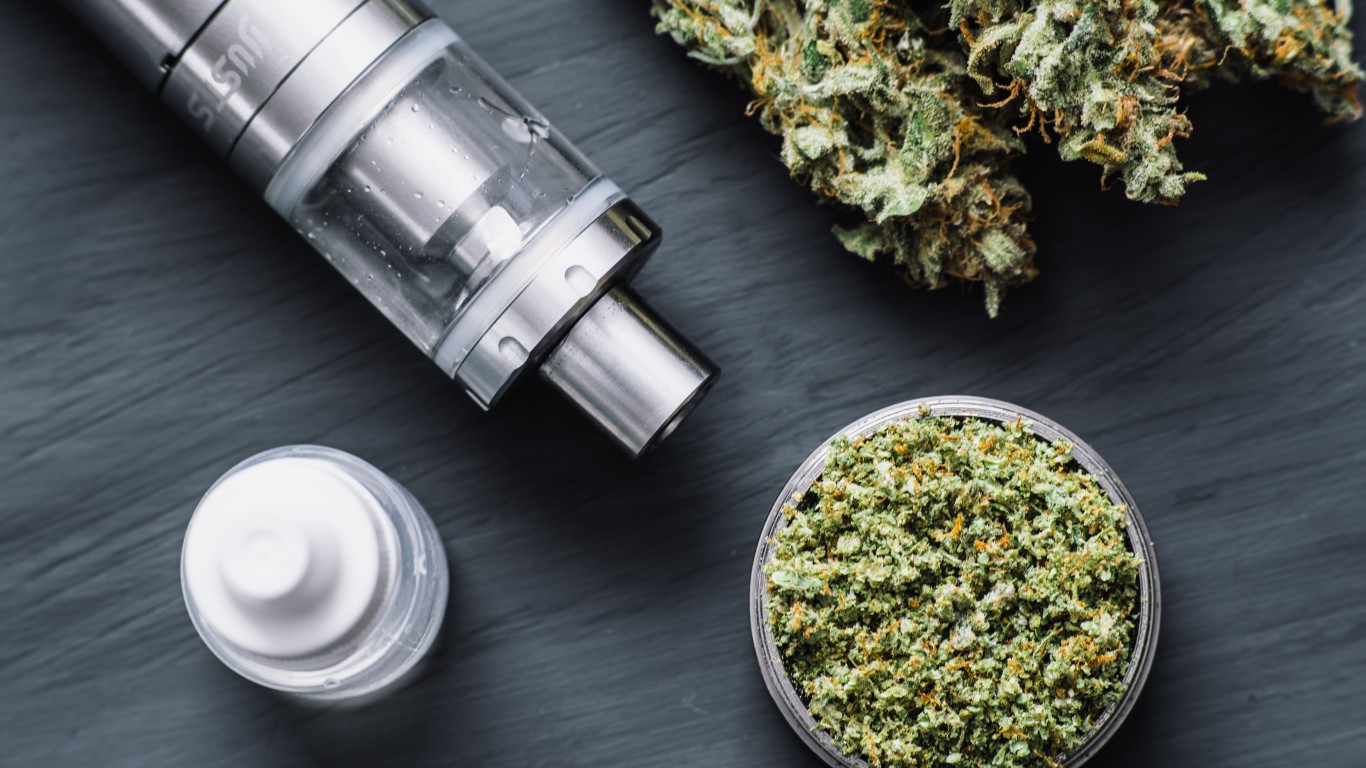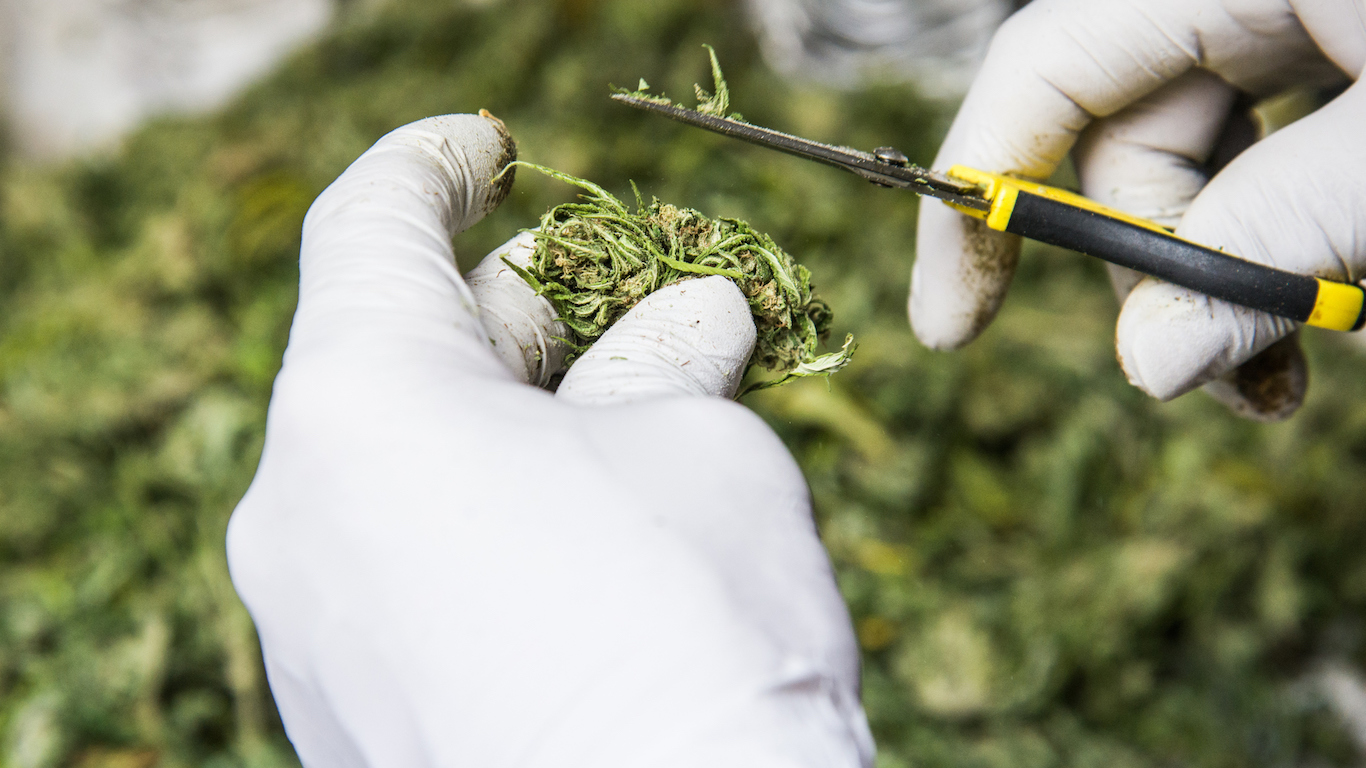

Legalizing marijuana for recreational use can be a controversial topic that crosses political lines, demographics, and age groups, and traverses borders. With more states in the United States having legalized marijuana for medical and recreational use, and with many more states here expected to legalize certain uses of cannabis, the legalization of cannabis use in Canada could offer insights on many key issues.
In October of 2018, Canada became the second nation to legalize cannabis for nonmedical use. According to Statistics Canada, cannabis is one of the most widely used substances in Canada. The group even reported that close to half of all Canadians aged 15 or older have reported using it at least once. The statistics office also warned that the policies of legalizing nonmedical and medical cannabis use or both have become more common elsewhere, and that includes in several U.S. states.
Statistics Canada, the nation’s official government and economics statistical entity, has released its first 2019 health report following the analysis of trends on the prevalence of cannabis use (and related metrics) in Canada. It addresses multiple issues and includes many footnotes in the 95% confidence intervals that might alter the figures represented either up or down.
The Canadian statistics office reported that regular or heavy use that started young or during adolescence is related to a variety of harms to both users and others. Still, the office also noted that the impacts of legalization remain uncertain because the Cannabis Act has been in place for less than a year — and Canada’s framework for legalization makes comparisons to other jurisdictions difficult. The Statistics Canada analysis said:
It is increasingly recognized that information about overall cannabis use prevalence, while necessary, is not sufficient for monitoring the full scope of legalization’s impacts. Emergent literature suggests quantity may be a better predictor of cannabis-related harms than frequency and not much is known about the actual cannabis products being consumed. Legalization also affects product availability, how cannabis is used, and/or product preferences, which, in turn, could have implications for health, health care service use, revenues, and crime.
Canada has also noted that it is able to track potential cannabis-use behavior changes as it has the established Canadian Tobacco, Alcohol and Drugs Survey and the newer National Cannabis Survey. Those surveys were conducted by computer-assisted telephone interviews by Statistics Canada and sponsored by Health Canada. The target populations of the reports were the household populations with those aged 15 and older in each province. It excluded residents of Canada’s territories, full-time residents of institutions, the homeless, and those who were unable to converse in English or French.
A look deep into the tables and data revealed more specific statistics. Some may seem exactly as you might have expected, and others may stand out. Of the population as a whole, 17.5% of Canadians aged 15 and up in the national survey reported cannabis use. That is up from 14.0% in the first quarter of 2018 — versus 14.8% for all of 2017 and just 9.4% for all of 2004.
Increased use was higher among males, with 22.3% having used cannabis in the first quarter of 2019 versus 15.8% in the first quarter of 2018. Female use was 12.7% in the first quarter of 2019 versus 12.2% a year earlier.
The largest age group ranked to see higher use was in the group aged 15 to 24: 29.5% in the first quarter of 2019 versus 23.2% in the first quarter of 2018. Those aged 18 to 24 who used cannabis in the first quarter of 2018 counted as 28.1% and that rose to 34.8% for the first quarter of 2019. Those aged 25 and older had 12.8% use in the first quarter of 2018 and 15.9% in the first quarter of 2019. Cannabis use also nosedived as each subgroup above 25 ages.
Statistics Canada also showed that the use of cannabis in the first quarter of 2019 was much higher in some provinces than others:
- Newfoundland and Labrador (18.5%)
- Prince Edward Island (15.4%)
- Nova Scotia (18.2%)
- New Brunswick (18.2%)
- Quebec (11.0%)
- Ontario (20.0%)
- Manitoba (13.0%)
- Saskatchewan (15.7%)
- Alberta (21.5%)
- British Columbia (19.1%)
Also noted in the first quarter of 2019 was that dried cannabis (flower/leaf) was the most commonly used product type at 45.2%. The average (mean) quantity of use during the first quarter of 2019 was 27.5 grams. While use was higher for 18- to 24-year-olds than for the group age 25 and older, the average (mean) was 30 grams for those 25 and up versus 18.9 grams for those aged 15 to 24.
Again, some of these statistics might have easily been predicted. Others seemed to be surprising.
es, demographics, and age groups, and traverses borders. With more states in the United States having legalized marijuana for medical and recreational use, and with many more states here expected to legalize certain uses of cannabis, the legalization of cannabis use in Canada could offer insights on many key issues.
In October of 2018, Canada became the second nation to legalize cannabis for nonmedical use. According to Statistics Canada, cannabis is one of the most widely used substances in Canada. The group even reported that close to half of all Canadians aged 15 or older have reported using it at least once. The statistics office also warned that the policies of legalizing nonmedical and medical cannabis use or both have become more common elsewhere, and that includes in several U.S. states.
Statistics Canada, the nation’s official government and economics statistical entity, has released its first 2019 health report following the analysis of trends on the prevalence of cannabis use (and related metrics) in Canada. It addresses multiple issues and includes many footnotes in the 95% confidence intervals that might alter the figures represented either up or down.
The Canadian statistics office reported that regular or heavy use that started young or during adolescence is related to a variety of harms to both users and others. Still, the office also noted that the impacts of legalization remain uncertain because the Cannabis Act has been in place for less than a year — and Canada’s framework for legalization makes comparisons to other jurisdictions difficult. The Statistics Canada analysis said:
It is increasingly recognized that information about overall cannabis use prevalence, while necessary, is not sufficient for monitoring the full scope of legalization’s impacts. Emergent literature suggests quantity may be a better predictor of cannabis-related harms than frequency and not much is known about the actual cannabis products being consumed. Legalization also affects product availability, how cannabis is used, and/or product preferences, which, in turn, could have implications for health, health care service use, revenues, and crime.
Canada has also noted that it is able to track potential cannabis-use behavior changes as it has the established Canadian Tobacco, Alcohol and Drugs Survey and the newer National Cannabis Survey. Those surveys were conducted by computer-assisted telephone interviews by Statistics Canada and sponsored by Health Canada. The target populations of the reports were the household populations with those aged 15 and older in each province. It excluded residents of Canada’s territories, full-time residents of institutions, the homeless, and those who were unable to converse in English or French.
A look deep into the tables and data revealed more specific statistics. Some may seem exactly as you might have expected, and others may stand out. Of the population as a whole, 17.5% of Canadians aged 15 and up in the national survey reported cannabis use. That is up from 14.0% in the first quarter of 2018 — versus 14.8% for all of 2017 and just 9.4% for all of 2004.
Increased use was higher among males, with 22.3% having used cannabis in the first quarter of 2019 versus 15.8% in the first quarter of 2018. Female use was 12.7% in the first quarter of 2019 versus 12.2% a year earlier.
The largest age group ranked to see higher use was in the group aged 15 to 24: 29.5% in the first quarter of 2019 versus 23.2% in the first quarter of 2018. Those aged 18 to 24 who used cannabis in the first quarter of 2018 counted as 28.1% and that rose to 34.8% for the first quarter of 2019. Those aged 25 and older had 12.8% use in the first quarter of 2018 and 15.9% in the first quarter of 2019. Cannabis use also nosedived as each subgroup above 25 ages.
Statistics Canada also showed that the use of cannabis in the first quarter of 2019 was much higher in some provinces than others:
- Newfoundland and Labrador (18.5%)
- Prince Edward Island (15.4%)
- Nova Scotia (18.2%)
- New Brunswick (18.2%)
- Quebec (11.0%)
- Ontario (20.0%)
- Manitoba (13.0%)
- Saskatchewan (15.7%)
- Alberta (21.5%)
- British Columbia (19.1%)
Also noted in the first quarter of 2019 was that dried cannabis (flower/leaf) was the most commonly used product type at 45.2%. The average (mean) quantity of use during the first quarter of 2019 was 27.5 grams. While use was higher for 18- to 24-year-olds than for the group age 25 and older, the average (mean) was 30 grams for those 25 and up versus 18.9 grams for those aged 15 to 24.
Again, some of these statistics might have easily been predicted. Others seemed to be surprising.
Take This Retirement Quiz To Get Matched With An Advisor Now (Sponsored)
Are you ready for retirement? Planning for retirement can be overwhelming, that’s why it could be a good idea to speak to a fiduciary financial advisor about your goals today.
Start by taking this retirement quiz right here from SmartAsset that will match you with up to 3 financial advisors that serve your area and beyond in 5 minutes. Smart Asset is now matching over 50,000 people a month.
Click here now to get started.
Thank you for reading! Have some feedback for us?
Contact the 24/7 Wall St. editorial team.
 24/7 Wall St.
24/7 Wall St. 24/7 Wall St.
24/7 Wall St.


